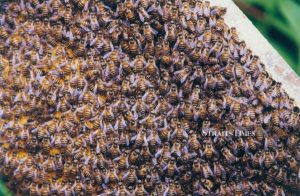Millions of honey bees mysteriously killed or missing
NSTP file pic
Millions of farmed honey bees in South Korea have been mysteriously killed or disappeared, prompting authorities to investigate the cause.
The incident that occurred in Haenam County started last September and until recently, 10 farms in the county in South Jeolla Province have reported the problem.
According to a Korea Times report, five of the farms said more than 80 per cent of their bees were killed or have gone missing, while the others said up to half their bee colonies were affected.
There are about 80 honey bee farms with about 20,000 hives in the county.
Local reports said farm owners complained that the bees vanished mostly last December and this month.
Some said the bees probably left their hives for some unknown reasons and died due to the winter cold.
However, a county official said it is “extremely rare that such a large number of honey bees suddenly vanished during the December-January period.”
The county’s bee farmers association said they first thought this mass killing and the missing bees were due to a certain disease sweeping bee farms and they tried to control the threat.
But their efforts have not led to any clear solution to the problem, leaving the farmers deeply concerned.
Haenam’s honey production has received a direct blow from the incident, having collected only a quarter of the previous year’s yield.
According to a beekeeper from the county, a single hive could produce up to 20 kg of honey but their collections now only averaged between five and eight kg.
The Haenam county government last September requested the province’s veterinary service laboratory to assess the incident, and eventually concluded that it might have been as a result of foulbrood ― a fatal bacterial disease.
However as the damage continued to worry the farmers, county authorities are now planning to conduct a second assessment based on more extensive sampling than before.
The Times report said that a county government official pointed out that the incident was most probably caused by a certain mutated virus infection.
It could have also been made worse due to warmer than usual weather during the bees’ hibernation period, which begins in October and the infection could have spread further.
Millions of honey bees mysteriously killed or missing (nst.com.my)









